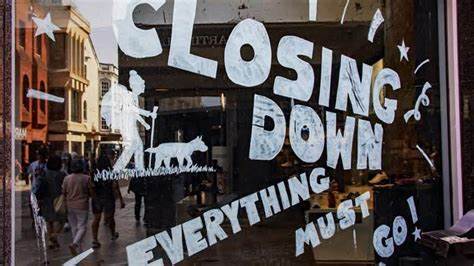The closure of a retail store, particularly one that serves as a key anchor in a shopping plaza, reverberates throughout the entire community. Beyond the immediate impact on shoppers who frequented the store, it sets off a chain reaction that affects neighboring businesses, property owners, and the local economy at large. The closure of such a store not only disrupts the shopping habits of consumers but also undermines the stability and viability of the entire commercial ecosystem.
When a prominent retailer shuts its doors, nearby businesses often bear the brunt of the fallout. Whether it’s a cafe, a hair salon, or a nail spa, these establishments rely on the steady stream of foot traffic generated by the anchor store to attract customers. For many small businesses, being located in close proximity to a popular retailer can mean the difference between thriving and barely surviving. The closure of the anchor store can lead to a significant drop in foot traffic, resulting in dwindling sales and, in some cases, forced closures.
Moreover, the closure of a key retailer can have a ripple effect on property values and rental rates in the area. Landlords who once commanded premium rents for storefronts near the anchor store may find themselves struggling to fill vacancies and maintain property values. This, in turn, can impact the financial health of property owners and investors who rely on rental income to sustain their investments.
In challenging economic times, such as those marked by rising labor costs, soaring rents, and tightening credit conditions, the closure of a major retailer can exacerbate existing pressures on businesses operating in the same vicinity. With profit margins already razor-thin, many businesses may find it difficult to weather the storm and may be forced to close their doors permanently.
However, amidst the doom and gloom of retail closures, there is often a glimmer of hope in the form of a new tenant stepping in to take over the vacant space. In the case of Dollar Tree’s acquisition of leases previously held by 99 Cents Only, this represents a lifeline for the communities affected by the closures. By assuming control of these leases, Dollar Tree not only ensures the continued availability of discount shopping options but also injects new life into struggling shopping plazas.
The acquisition of leases by Dollar Tree and other growing chains not only preserves access to essential goods and services but also serves as a catalyst for revitalization and growth. By occupying vacant storefronts and attracting customers back to the area, these chains contribute to the economic vitality and resilience of local communities. Moreover, the reopening of newly acquired locations signals a renewed sense of optimism and opportunity for businesses and consumers alike.
In conclusion, while the closure of a key retailer may initially spell trouble for the surrounding businesses and community, the emergence of new tenants like Dollar Tree offers a ray of hope for revitalization. By leveraging their resources and expertise, these chains play a vital role in reshaping the retail landscape and ensuring the continued vibrancy of local economies. As communities adapt to changing market dynamics, they must embrace innovation and collaboration to navigate the challenges posed by retail closures and emerge stronger and more resilient than before.
